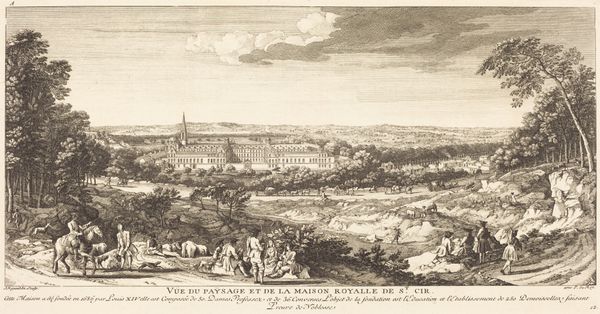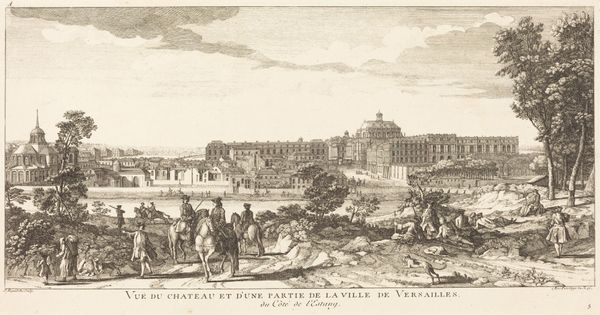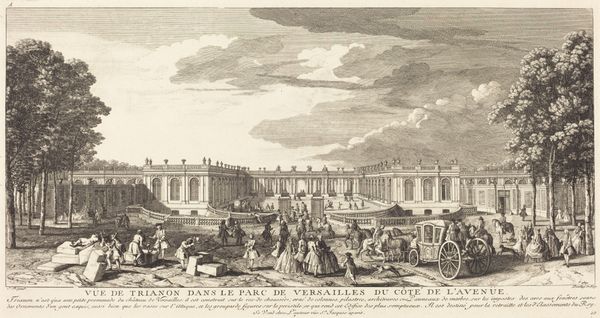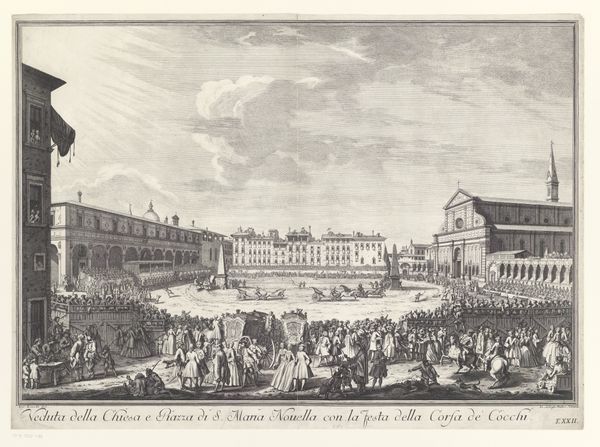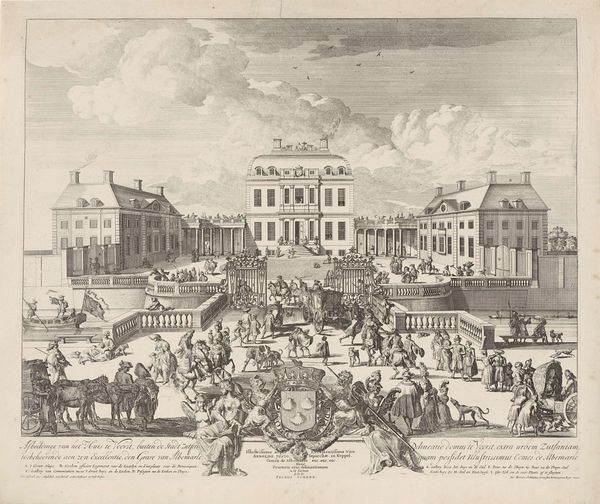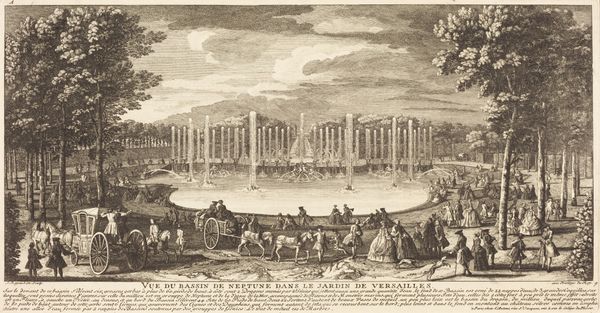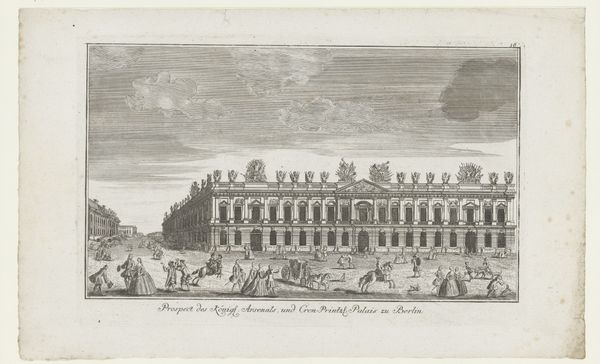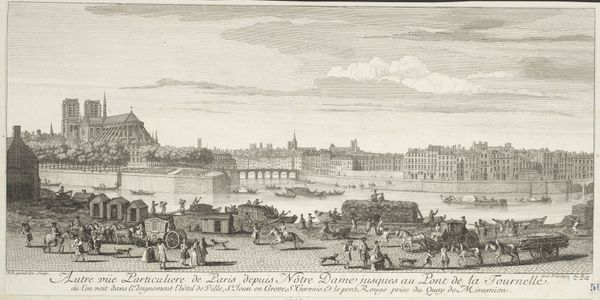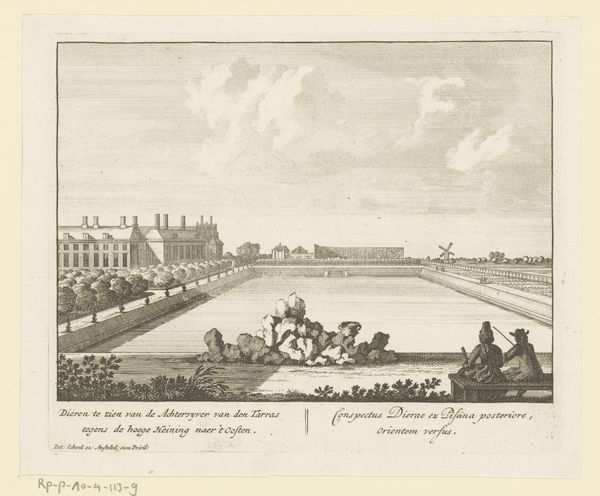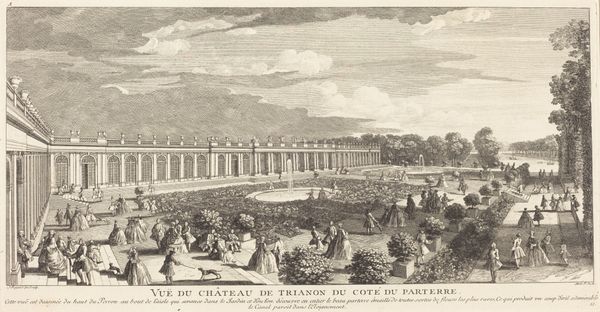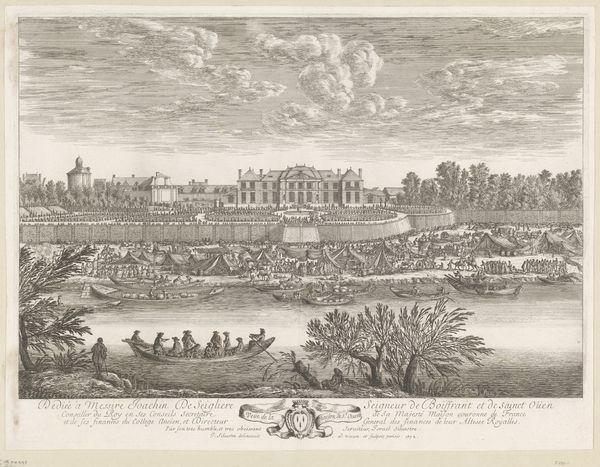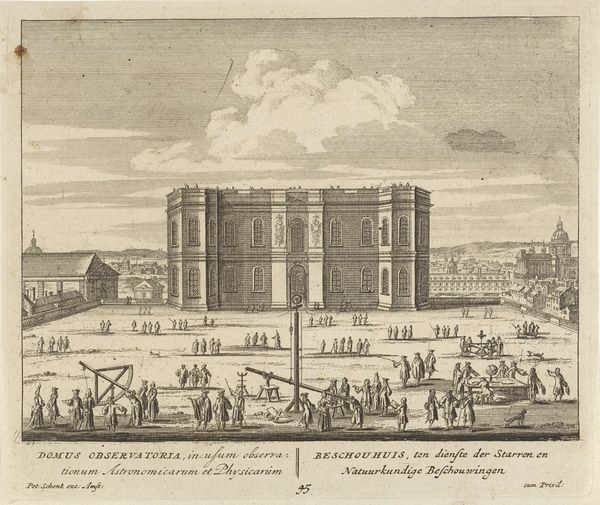
print, engraving
#
baroque
# print
#
landscape
#
perspective
#
cityscape
#
academic-art
#
engraving
Copyright: National Gallery of Art: CC0 1.0
Editor: This print, "Vue du Chateau de Versailles du Cote de l'Orangerie" by Jean-Baptiste Rigaud, captures a scene at Versailles. The engraving gives the chateau a looming, yet orderly presence. What immediately strikes me is the interplay of textures; the artist uses tight, rhythmic strokes. What do you see in the composition and its formal elements? Curator: The composition presents a compelling study in contrasts. Notice the rigid geometry of the chateau and its reflection contrasted with the more organic, almost chaotic arrangement of figures in the foreground. Rigaud skillfully employs line to differentiate these zones and guide the viewer's eye. Editor: That contrast between the geometric chateau and organic figures really makes the building the primary focus. How do you see that applying more broadly in the print? Curator: Observe the strategic use of hatching and cross-hatching. The dense application in the foreground creates depth and textural complexity, gradually diminishing toward the chateau to emphasize its smooth, planar surfaces. The systematic arrangement and gradation direct attention towards the idealized architecture, symbolizing absolute power. What semiotic system would you suggest applies to it? Editor: The systematic arrangement definitely seems key here. I suppose we could see it in terms of structuralism. The way the elements relate is a coded representation of class hierarchies. The composition isn’t merely decorative, but a deliberate visual strategy to reinforce the power and the prominence of the aristocracy over nature and over commoners. Curator: Indeed, a perceptive analysis. By acknowledging its underlying architecture, the print transforms into something more than a beautiful view; it is, instead, an expression of absolute sovereignty encoded in visual form. What a splendid opportunity for reevaluation and deeper insight!
Comments
No comments
Be the first to comment and join the conversation on the ultimate creative platform.
